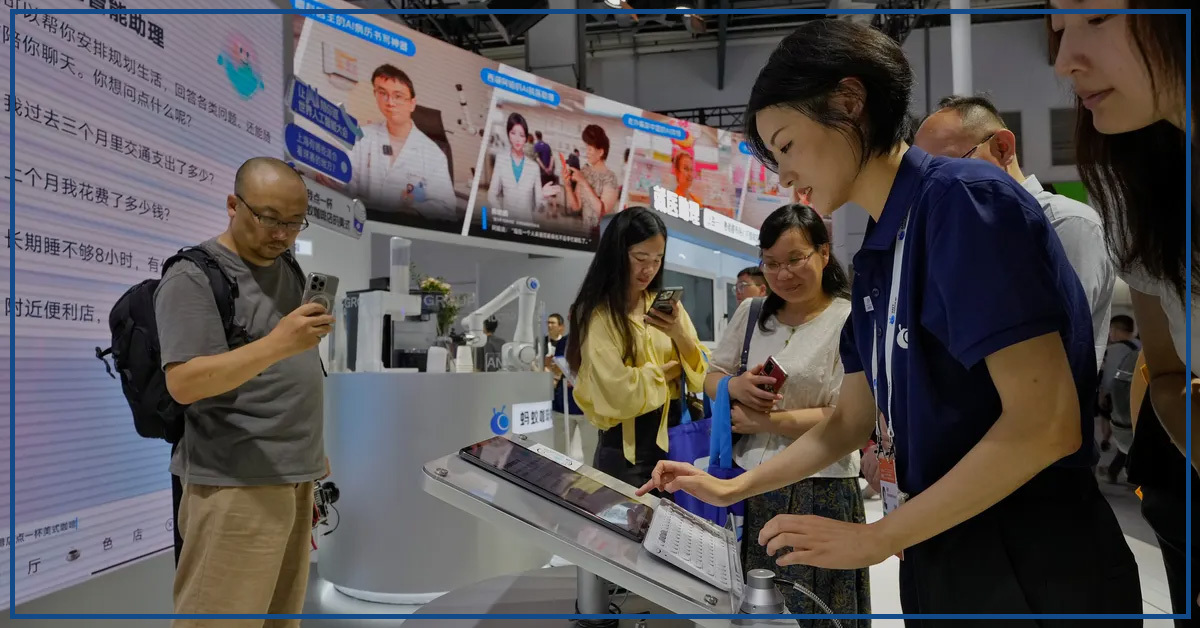At the World AI Conference in Shanghai last week, SenseTime, a leading artificial intelligence company in China, unveiled its latest model, SenseNova 5.5. This new model demonstrated impressive capabilities, such as identifying and describing a stuffed toy puppy (wearing a SenseTime cap), providing feedback on a drawing of a rabbit, and instantly reading and summarizing a page of text. SenseTime claims that SenseNova 5.5 is on par with GPT-4, the flagship AI model from the Microsoft-backed US company OpenAI.
To attract users, SenseTime is offering 50 million free tokens—digital credits for using the AI—and will deploy staff to assist new clients in migrating from OpenAI services to SenseTime’s products at no cost.
Chinese efforts to attract domestic developers away from OpenAI, widely regarded as the leader in generative AI, have been bolstered by OpenAI’s recent decision to block users in China from accessing its tools and services starting on July 9. “We are taking additional steps to block API traffic from regions where we do not support access to OpenAI’s services,” an OpenAI spokesperson told Bloomberg last month.

OpenAI has not provided detailed reasons for this sudden decision. While ChatGPT is already blocked in China by the government’s firewall, developers had been using virtual private networks to access OpenAI’s tools for fine-tuning their own AI applications and benchmarking their research. Now, the block is being enforced from the US side.
Rising tensions between Washington and Beijing have led the US to restrict the export of certain advanced semiconductors to China, which are crucial for training cutting-edge AI technology. This has put additional pressure on the AI industry.
OpenAI’s move has “caused significant concern within China’s AI community,” said Xiaohu Zhu, the founder of the Shanghai-based Centre for Safe AGI, which promotes AI safety. He noted that “the decision raises questions about equitable access to AI technologies globally.”
However, this situation has also created an opportunity for domestic AI companies like SenseTime, which are eager to attract OpenAI’s former users. Following the warnings about OpenAI’s decision, Baidu offered 50 million free tokens for its Ernie 3.5 AI model, along with free migration services. Zhipu AI, another local company, offered 150 million free tokens for its model. Tencent Cloud is providing 100 million free tokens for its AI model to new users until the end of July. “Competitors are offering migration pathways for former OpenAI users, seeing this as an opportunity to expand their user base,” Zhu added.
One potential consequence of OpenAI’s decision is that it may accelerate the development of Chinese AI companies, which are in fierce competition with their US counterparts and with each other. China is estimated to have at least 130 large language models, accounting for 40% of the world’s total, second only to the US. While US companies like OpenAI have been at the forefront of generative AI, Chinese companies have been engaged in a price war, which some analysts speculate could harm their profit margins and ability to innovate. Nonetheless, Winston Ma, a professor at New York University who writes about Chinese technology, remarked that OpenAI’s departure from China comes “at a time when Chinese big tech players are closing the performance gap with OpenAI and are offering these Chinese LLM models essentially for free.”“OpenAI’s departure is a short-term shock to the Chinese market, but it may provide a long-term opportunity for domestic LLM models to be truly tested,” said Winston Ma, a professor at New York University who writes about Chinese technology. Ma noted that until now, Chinese companies have been more focused on the commercialization of large language models rather than advancing the models themselves.
Chinese commentators have downplayed the impact of OpenAI’s decision. The state media outlet Global Times described it as “a push from the US to hamper China’s technology development.” Pan Helin, a digital economy researcher at Zhejiang University and a member of a government technology committee, called the development “a good thing for China’s large-scale model independence and self-reliance,” according to Chinese media.
However, there are indications that US restrictions on China’s AI industry are starting to have an effect. The online video giant Kuaishou recently had to limit the number of users for its new text-to-video AI model, Kling, due to a lack of computing capacity caused by a shortage of chips, as reported by The Information. Additionally, there is now a booming hidden market for US semiconductors, as companies seek ways to circumvent the sanctions. Being blocked from US software may lead to similar creative solutions.





